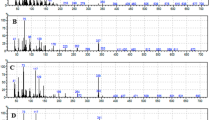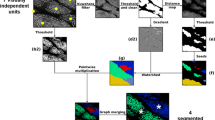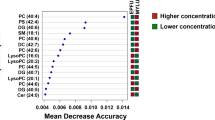Abstract
OUR histochemical observations on the brown and yellow adipose tissue of the bat, Hipposideros speoris, showed that the activity of lipase is more or less the same in the two types of adipose tissue (unpublished). Fawcett1, using histochemical methods, reported a much higher concentration of lipase in the brown than the yellow adipose tissue of the rat. Here we report the results of a quantitative study of lipase activity in the brown and yellow adipose tissue of the bat, Hipposideros speoris.
This is a preview of subscription content, access via your institution
Access options
Subscribe to this journal
Receive 51 print issues and online access
$199.00 per year
only $3.90 per issue
Buy this article
- Purchase on Springer Link
- Instant access to full article PDF
Prices may be subject to local taxes which are calculated during checkout
Similar content being viewed by others
References
Fawcett, D. W., J. Morph., 90, 363 (1952).
Martin, H. F., and Peers, F. G., Biochem. J., 55, 523 (1953).
Hawk, P. B., Oser, B. L., and Summerson, W. H., “Practical Physiological Chemistry” (McGraw-Hill, New York, 1954).
Remillard, G. L., Ann. N.Y. Acad. Sci, 72, 1 (1958).
George, J. C., and Eapen, J., J. Anim. Morph. Physiol., 5, 49 (1958).
Author information
Authors and Affiliations
Rights and permissions
About this article
Cite this article
GEORGE, J., EAPEN, J. Lipase Activity in the Brown and Yellow Adipose Tissue of the Bat. Nature 184, 59–60 (1959). https://doi.org/10.1038/184059a0
Issue Date:
DOI: https://doi.org/10.1038/184059a0
This article is cited by
-
Studies on triacylglycerol ester hydrolase from bat adipose tissue
Journal of Biosciences (1983)
-
Die Entwicklung des subcutanen Fettgewebes im fr�hen Kindesalter
Zeitschrift f�r Kinderheilkunde (1961)
Comments
By submitting a comment you agree to abide by our Terms and Community Guidelines. If you find something abusive or that does not comply with our terms or guidelines please flag it as inappropriate.



